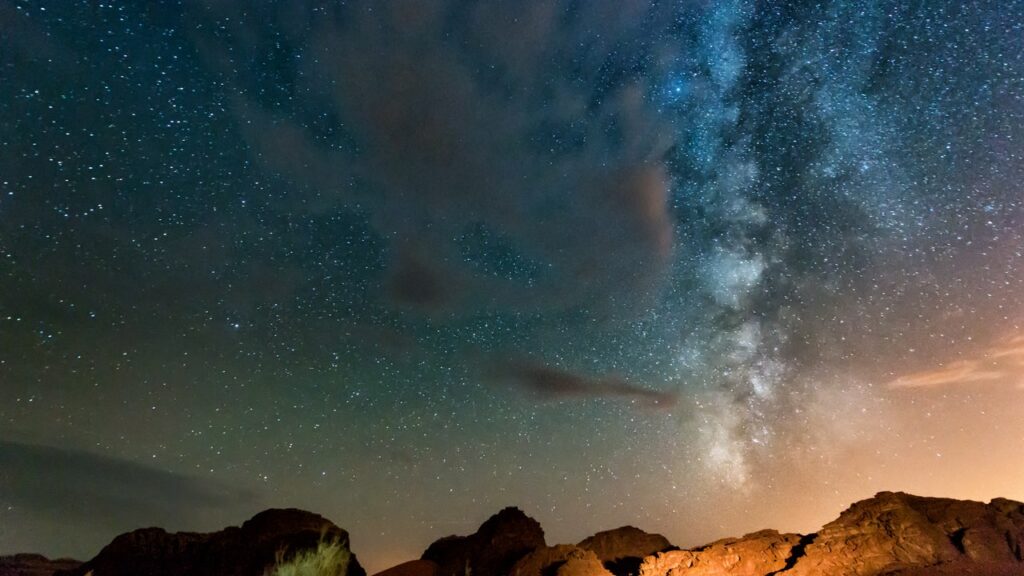What to expect in the skies over Wadi Rum
Even without a telescopic lens, Wadi rum’s night sky is so clear and bright that it allows familiar patterns to be seen clearly. The Milky Way stretches from one end of the sky to the other, displaying a dense river that appears almost tangible. The Milky Way is always there, anchoring and guiding the eye upward.
Among the most recognizable features is Orion’s Belt—three bright stars in a straight line, forming the center of the Orion constellation. Look southward on winter evenings to find it. The belt points down towards Sirius, which is the brightest star of the night, and up toward Aldebaran, an orange giant in Taurus.
A prominent asterism, the Big Dipper is part of Ursa major. The distinctive “ladle-shaped” shape of this asterism makes it easy for you to recognize. Polaris is the North Star. To find it, trace a straight line between the two outermost stars of the Big Dipper bowl. This leads to Polaris. It remains almost fixed in the sky and marks true North.
Planets such as Pluto and Uranus are more visible at night. Jupiter and Saturn come into view—steady points of light that don’t flicker the way stars do. Once you’ve noticed it, you can easily distinguish them. Now and again, a meteor passes overhead. It disappears almost as fast as it appears.
Wadi Rum: Where to Stay
The sky is Wadi Rum’s greatest asset. Many properties take advantage of the desert’s natural beauty, but they also offer guided tours and thoughtfully designed experiences. The majority of properties provide access to trained guides or astronomers that walk guests around the constellations and point planets, stars and subtle differences.



